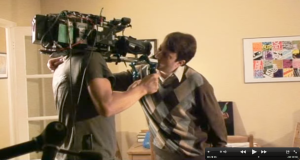Point of View, or POV, is a powerful narrative technique. It allows us to see through the eyes of another individual, explore distant lands, or omnipotently peer into the minds of unsuspecting characters. Douglass and Harnden discuss POV in Chapter 3 of their text The Art of Technique. They aptly state that “chronologies, plots, characters, themes, and interpretations” (31) all flow from the choice of POV.
Storyteller Perspective
There seems to be three definitions of POV, as stated by the authors. They define POV as:
- The way scenes are filmed, as if it’s through the eye of the viewer
- The perspective of the storyteller
- Interests, attitudes & beliefs associated with a character’s or group’s perspective
The authors of this text mention that first-person point of view can be used as a way of expressing oneself in a direct and personal way. It opens the mind of an individual to the user, exposing him or her in every way possible. When reading this section of the chapter I thought about the British comedy Peep Show.
In this show, the scenes are always filmed from the perspective of one of the characters. This creates a very interesting dynamic – you are only completely aware of the thoughts and feelings of one character at a time, while watching him interact and have experiences with other characters. Constantly switching between characters can seem a little disorienting, but it keeps the show interesting, allowing the first-person shots to last longer and hold the audience’s attention with greater strength.
This ties in to another point made by the authors later in the text – that “a narrative does not even have to be confined to a single storyteller or point of view” (36). Although Peep Show purposely sticks to first-person in order to maintain a certain amount of consistency and comedic style, it constantly jumps between storytellers, giving very unique and different views of similar situations. First person can be very limiting if used alone, but Peep Show takes advantage of this limitation in order to enhance its point of view and create comedic situations out of ordinary events.
Discussion Questions
- Would it be possible to make a movie entirely in first-person perspective without it becoming artificial or boring
- In what situations does it seem appropriate for a character to break the fourth wall and talk directly to the audience?
